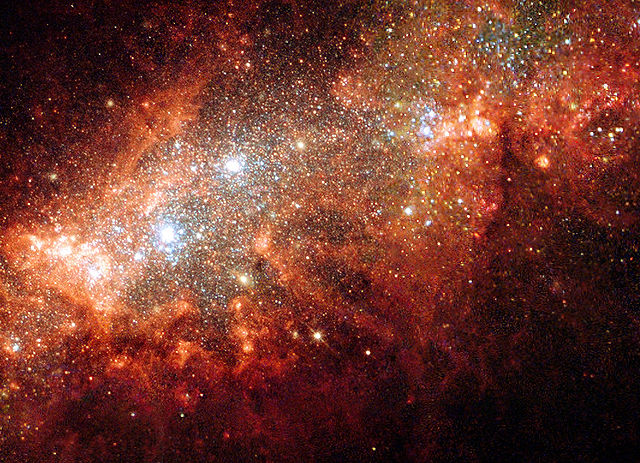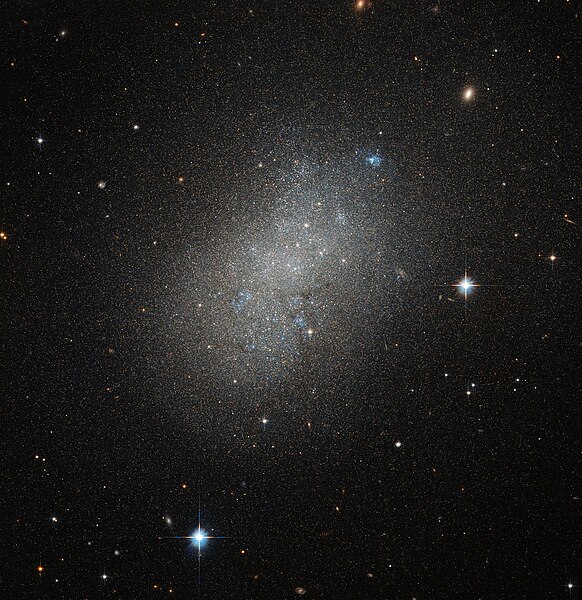NGC 1569 is a dwarf irregular galaxy in Camelopardalis. The galaxy is relatively nearby and consequently, the Hubble Space Telescope can easily resolve the stars within the galaxy. The distance to the galaxy was previously believed to be only 2.4 Mpc. However, in 2008 scientists studying images from Hubble calculated the galaxy's distance at nearly 11 million light-years away, about 4 million light-years farther than previously thought, meaning it is a member of the IC 342 group of galaxies.
A Hubble Space Telescope (HST) image of NGC 1569
Center of NGC 1569 as imaged by the Hubble Space Telescope. At center left the two super star clusters NGC 1569 A1 and NGC 1569 A2 are visible.
A dwarf galaxy is a small galaxy composed of about 1000 up to several billion stars, as compared to the Milky Way's 200–400 billion stars. The Large Magellanic Cloud, which closely orbits the Milky Way and contains over 30 billion stars, is sometimes classified as a dwarf galaxy; others consider it a full-fledged galaxy. Dwarf galaxies' formation and activity are thought to be heavily influenced by interactions with larger galaxies. Astronomers identify numerous types of dwarf galaxies, based on their shape and composition.
The Large Magellanic Cloud, a satellite galaxy of the Milky Way
Dwarf galaxies like NGC 5264 typically possess around a billion stars.
The Phoenix Dwarf Galaxy is a dwarf irregular galaxy, featuring younger stars in its inner regions and older ones at its outskirts.
UGC 11411 is a galaxy known as an irregular blue compact dwarf (BCD) galaxy.






